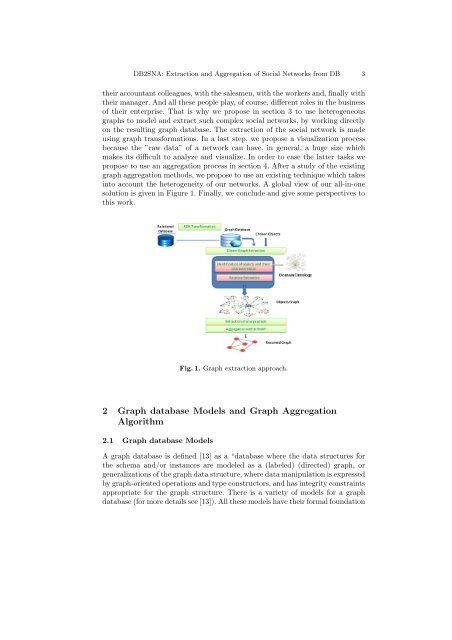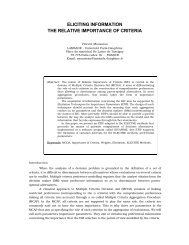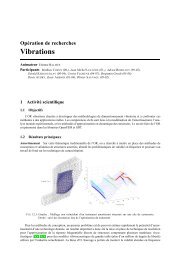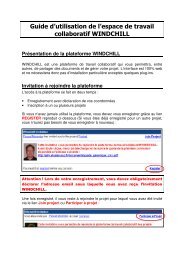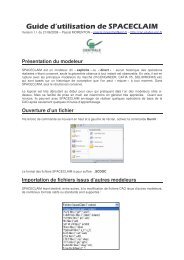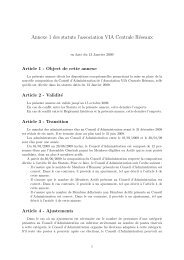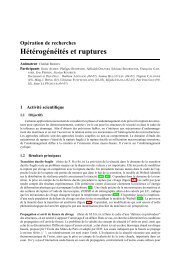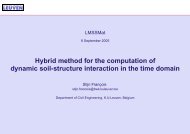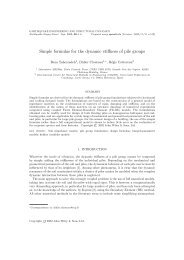2 Authors Suppressed Due to Excessive Lengtheven multiple ones, between objects. It also facilitates data query using graphoperations. Explicit graphs and graph operations allow a user to express a queryat a very high level of abstraction.People need to visualize different types of interactions between heterogeneousobjects (e.g. product and site, customers and product, people interaction likesocial networks, etc.).Inordertoanalyzetheseinteractionsandfacilitatetheirqueryingusinggraphquery languages and social network analysis methods, it is relevant to modulatesuch interaction by using a graph structure.Indeed, these different graphs can help enterprises sending product recommendations(using the graph of Products and client), finding experts (usingsocial network), etc.Nevertheless, in a business context, important expertise information is storedin files, databases and especially relational databases. Relational database pervadesalmost all businesses. Many kinds of data, from e-mails and contact informationto financial data and sales records, are stored in databases. Also,databases used in business contain information about all people, objects andprocesses related to the enterprise. This data source is a rich one to extractobject interaction.However, a relational database is not the most suited data structure to storethe”graph-like”informationaboutasocialnetwork.Bynature,agraphdatabaseis more preferable, because its structure is close to the structure of a socialnetwork.Then, this chapter presents a new approach of social network extractionfrom relational database which allows discovering hidden relationships betweenentities. This approachhas beengeneralized toextract differentkindofheterogeneousobjects graphs: such graph contains several kinds of relations and objects.Each object owns a set of characteristics which can be different from object toanother. In order to facilitate the visualization and data interpretation, it seemsinteresting to aggregate the extracted graphs. This aggregation should use notonly the relations between nodes but also the characteristics of each one andvery few algorithms do that. In this context, we use the aggregation algorithmK-SNAP.Then, the structure of this chapter is the following. First, we propose insection 2, as a pre-treatment, to migrate the social network information storedin a classical relational database towards a graph database model . Startingfrom this new representation of the social network information contained in theoriginaldatabases,weextractthesocialnetworkstructure,butitwouldbeapityto lose a lot of information using the classical graph representation of a socialnetwork. Indeed, in the graph theory used to model such networks, all nodes areof the same type, and all relationships are of the same kind. But, in real life,all people in a social network do not play the same role, and all relationshipsdot not necessary share the same type. In other words, we are not all friends,or only friends, with our neighbors or colleagues. The enterprise framework isa perfect example for this: accountants do not have the same relationship with
DB2SNA: Extraction and Aggregation of Social Networks from DB 3theiraccountantcolleagues,withthesalesmen,withtheworkersand,finallywiththeir manager. And all these people play, of course, different roles in the businessof their enterprise. That is why we propose in section 3 to use heterogeneousgraphs to model and extract such complex social networks, by working directlyon the resulting graph database. The extraction of the social network is madeusing graph transformations. In a last step, we propose a visualization processbecause the ”raw data” of a network can have, in general, a huge size whichmakes its difficult to analyze and visualize. In order to ease the latter tasks wepropose to use an aggregation process in section 4. After a study of the existinggraph aggregation methods, we propose to use an existing technique which takesinto account the heterogeneity of our networks. A global view of our all-in-onesolution is given in Figure 1. Finally, we conclude and give some perspectives tothis work.Fig.1. Graph extraction approach.2 Graph database Models and Graph AggregationAlgorithm2.1 Graph database ModelsA graph database is defined [13] as a “database where the data structures forthe schema and/or instances are modeled as a (labeled) (directed) graph, orgeneralizationsofthegraphdatastructure,wheredatamanipulationisexpressedbygraph-orientedoperationsandtypeconstructors,andhasintegrityconstraintsappropriate for the graph structure. There is a variety of models for a graphdatabase(formoredetailssee[13]).Allthesemodelshavetheirformalfoundation


